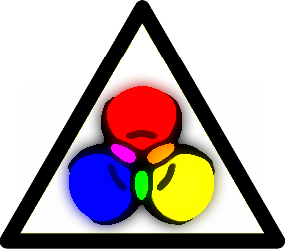Team:Cambridge
From 2009.igem.org
| Line 108: | Line 108: | ||
<tr> | <tr> | ||
| - | <td><a href="http://www. | + | <td><a href="http://www.rocheuk.com/"><img src="http://upload.wikimedia.org/wikipedia/commons/thumb/f/f5/Hoffmann-La_Roche_logo.svg/170px-Hoffmann-La_Roche_logo.svg.png" alt="Roche" width="85" height="44"></a></td> |
| + | |||
<td><a href="http://www.medical-solutions.co.uk/"><img src="http://www.gen.cam.ac.uk/Images/logos/iGEMsponsors/geneservice.jpg" alt="geneservice" width="140" height="26"></a></td> | <td><a href="http://www.medical-solutions.co.uk/"><img src="http://www.gen.cam.ac.uk/Images/logos/iGEMsponsors/geneservice.jpg" alt="geneservice" width="140" height="26"></a></td> | ||
| + | |||
<td><a href="http://www.bioscience.co.uk/"><img src="http://www.gen.cam.ac.uk/Images/logos/iGEMsponsors/cambridgebioscience.jpg" alt="cambridge bioscience" width="157" height="42"></a></td> | <td><a href="http://www.bioscience.co.uk/"><img src="http://www.gen.cam.ac.uk/Images/logos/iGEMsponsors/cambridgebioscience.jpg" alt="cambridge bioscience" width="157" height="42"></a></td> | ||
</tr> | </tr> | ||
Revision as of 15:48, 21 July 2009
| . | |
|
Previous iGEM teams have focused on genetically engineering bacteria to respond to novel inputs – for example light, or biologically significant compounds. There is an unmistakable need, therefore, to also develop clear, user-friendly outputs, especially for use with biosensors. The most popular output is the expression of a fluorescent protein, detectable using fluorescence microscopy. However, how much easier would it be if we could simply see the output with our own eyes? The Cambridge 2009 iGEM team is engineering E. coli to produce a range of pigments in order to equip future projects with better, more reliable, discrete outputs under logic control. Further, our bacteria utilize a shutter mechanism that guarantees pigment production after just a brief exposure to the desired input. | |
| Team Example |
| Home | The Team | The Project | Parts Submitted to the Registry | Modelling | Notebook | Protocols |
|---|
(Or you can choose different headings. But you must have a team page, a project page, and a notebook page.)
OverviewPrevious iGEM teams have focused on genetically engineering bacteria to respond to novel inputs – for example light, or biologically significant compounds. There is an unmistakable need, therefore, to also develop clear, user-friendly outputs, especially for use with biosensors. The most popular output is the expression of a fluorescent protein, detectable using fluorescence microscopy. However, how much easier would it be if we could simply ''see'' the output with our own eyes? The Cambridge 2009 iGEM team is engineering E. coli to produce a range of pigments in order to equip future projects with better, more reliable, discrete outputs under logic control. Further, our bacteria utilize a shutter mechanism that guarantees pigment production after just a brief exposure to the desired input. |
||
|
|
||
|
|
||
|
|
||
NotebookUnder construction. Read on... |
||
 "
"


